This blog post is more than five years old. It may contain outdated information or refer to products that are no longer available.
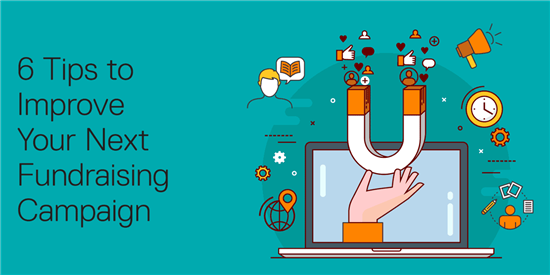
Storytelling is the currency of fundraising. In the digital environment of email, social media, and mobile, we can use storytelling in innovative ways to inspire supporters and donors — and raise more money.
Photos, videos, selfies, and personal stories allow us to embed emotional content in fundraising campaigns. They also invite our supporters and donors to be more deeply involved in our fundraising campaigns.
Below are six tips for nonprofits that want to use digital storytelling to engage donors and boost giving.
Tip 1: Create a Strategy
As you plan your next fundraising campaign, consider how you'll use stories as a central element of your messaging. Your goal is to create maximum emotional impact around your fundraising goal and deadline.
Ask These Questions to Start
- What's the central theme of your fundraising campaign (the goal you're trying to solve, amount of funds you need to raise, giving deadline)?
- How will you tell your story to create both authenticity and urgency?
- What photos and videos can you use to tell your campaign story?
- How will you encourage supporters and donors to make a gift? What tactics will push people to give (a match, or a deadline)?
- How can you encourage donors to share their generosity and spread the word? How can you obtain supporter-contributed content?
- How can you use your social media channels to spread the word about your fundraising campaign and showcase donor generosity?
- What previous fundraising campaigns worked best and why?
Tip 2: Use Photos to Create Emotional Impact
Photos are a central element to create emotional impact in your email appeals, on website pages, on website pop-up lightboxes, in digital advertising, and even on donation pages.
Consider how the photo subject will reinforce the fundraising campaign message. Avoid using stock photography, since this turns off donors. Use images of volunteers whenever possible to connect with your most avid supporters.
Here's a great example. Be the Match uses a photo of past volunteers to inspire people to sign up to raise funds:

And here's how International Medical Corps used a photo in its website lightbox to garner support for disaster survivors:
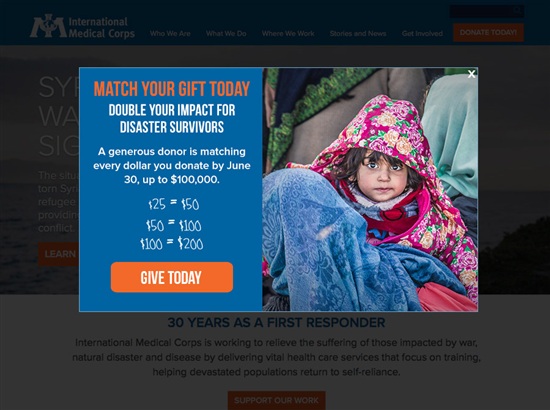
Middle East Children's Alliance used a slideshow during its 2016 year-end campaign to share powerful images and stories of families and children who need help:

Tip 3: Use a Photo on Your Donation Page to Inspire Giving
Featuring a good image on your donation page that captures the essence of your work can significantly improve your fundraising campaign's success. When selecting photos for donation pages, it's important that they be authentic and relevant so that they reinforce your campaign theme. Test a variety of images to figure out which one resonates best with your audience.
Here's a great example of an authentic and relevant photo on the Doctors Without Borders donation page:
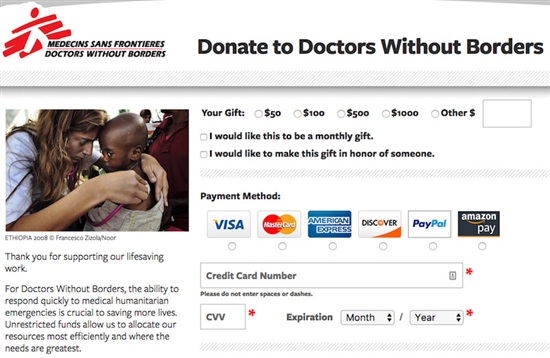
If you want more ideas to improve your donation page, this blog post showcases 10 tips.
Tip 4: Create a Video to Tell Your Story
Videos allow you to bring your fundraising story to life and connect with your audience. Furthermore, fundraising campaigns that include a video are often more successful.
CauseVox has assembled 15 examples of video storytelling for online fundraising campaigns.
TechSoup also offers an excellent resource guide for video storytelling. It's available for download on the Storymakers 2017 page.
Follow These Tips
- Keep your video less than two minutes long.
- Include a screenshot of the video in your email appeals and invite people to click through to watch it.
- Post the video on your website home page and on your social media channels to build maximum visibility for your fundraising campaign.
- Include a web address at the beginning and end of the video so you can direct people to where they can make a donation.
This fundraising appeal from SETI Institute incorporated a different short video at the top of each message, helping to tell the organization's story and ask for donations:

Tip 5: Encourage Photo and Video Sharing Among Your Supporters, Volunteers, and Donors
Encourage your supporters and donors to share their own photos with you during your fundraising campaign. You can ask your supporters to share their photos on Facebook, Instagram, or Twitter using a hashtag. Get permission to reuse and share photos to showcase your donor generosity and encourage peer giving.
Here's a good example: the Best Buddies Challenge promotes a hashtag for supporter-contributed photos during its annual bike ride in California to support families with children with intellectual disabilities.
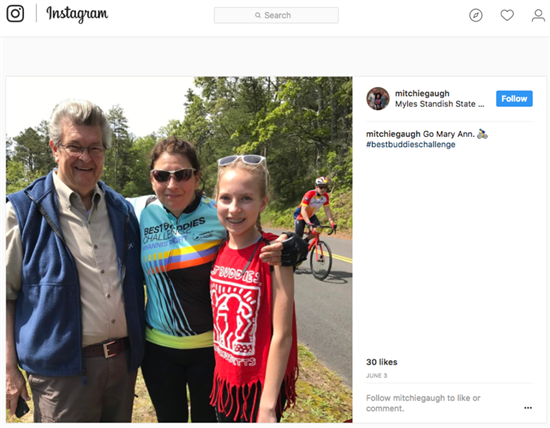
Tip 6: Use Peer-to-Peer Fundraising and Let Your Supporters Tell Their Own Stories
Create a community fundraising campaign and enroll your supporters to help you out. Supporters can create their own fundraising pages to raise money for your cause and tell their own stories about why they're involved. Encourage your fundraisers to use photos and videos to illustrate their campaign.
For example, Children's National uses a platform that lets families raise funds for its cause.
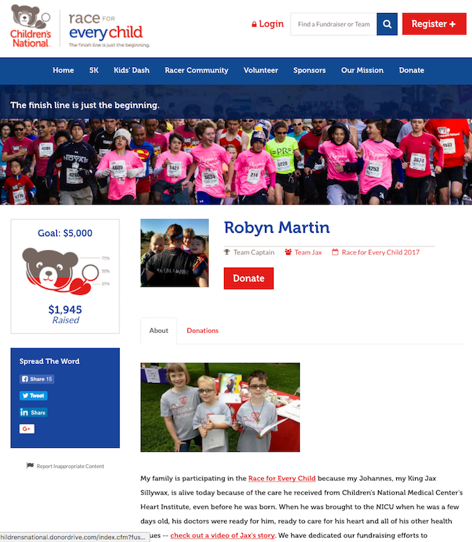
About the Author
Michael Stein has been a writer and digital strategist for progressive social causes for over two decades. He is the author of three books and numerous articles chronicling the rise of digital marketing, mobile, and online fundraising. He works as a consultant and coach to nonprofits, foundations, and educators, with a focus on marketing and fundraising in a multichannel and multiscreen world. Find Michael Stein on Twitter at @mstein63.
Image 1: TechSoup
Image 2: Be the Match
Image 3: International Medical Corps
Image 4: Middle East Children's Alliance
Image 5: Doctors Without Borders
Image 6: SETI Institute
Image 7: Best Buddies Challenge
Image 8: Children's National
Image 9: Michael Stein






